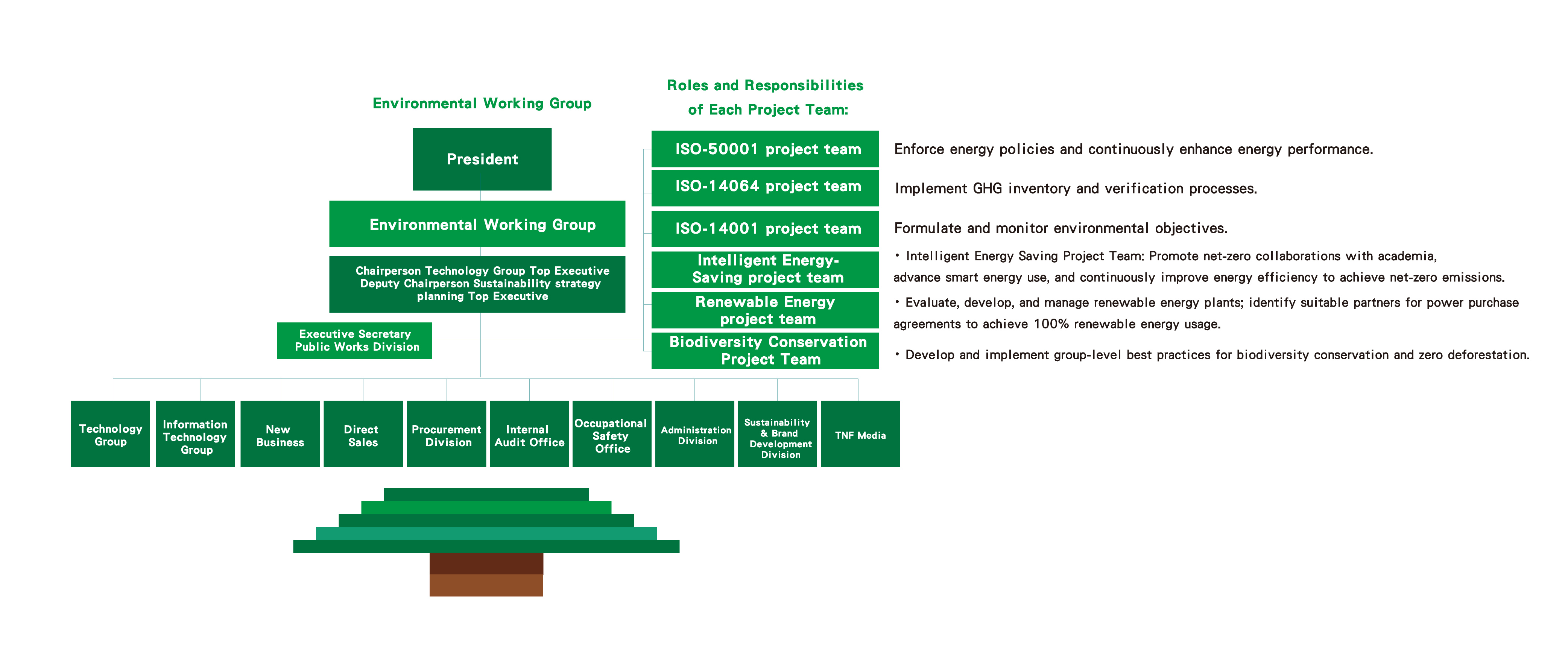
- About Us
- Investor Relations
- ESG
- Product & Service
- Customer Service
Customer Service
- Visiting Taiwan

The Environmental Management Committee was formally established in 2016 and renamed the Environmental Working Group (EWG) in 2022. The Chief Technology Officer of the Technology Group serves as the Chairperson and the Top Executive for sustainability strategy planning serves as the Deputy Chairperson, formulating environmental goals and strategies, promoting the company's environmentally friendly policies, and integrating six project groups namely ISO14001 (Environment Management), ISO14064 (GHG Inventory), ISO50001 (Energy Management), Intelligent Energy-Saving, Renewable Energy and Biodiversity Protection. The EWG convenes meetings every six months to assess implementation progress and identify areas for improvement. Executive secretaries from each project group regularly monitor the progress of improvements.
The roles and responsibilities of each project team as below:

| Environmental management objectives | 2024 Achievement | 2025 Strategies and Plans | ||
|---|---|---|---|---|
| KPI | 2030 Goals | 2024 Goals | ||
| Power saving | The annual reduction of electricity consumption 1% lower than that of 2016 | Saving 1% of electricity | Saved 68.17 million kWh of electricity—a 14.7 % reduction. | The annual power saving responsibility of each unit is 1% of the electricity consumed in 2016; a plan is drawn up and performance tracked every 6 months |
| Carbon reduction | Reduction in carbon emissions of 42% compared to 2022 | Reduce by 10.50% compared to the 2022 goal | Carbon emissions increased Increased by 20.6% | Increase the use of zero-carbon energy and low-carbon energy |
| Water Conservation | Reduce total tap water consumption by 15% compared with 2017 | Reduce by 7% | Reduce by 10.3% |
|
| Waste Reduction | Reduction of total non-recyclable waste by 40% compared to 2017 | Reduction by 22% | Reduction by 19.5% |
|
| Renewable energy source | Renewable energy accounts for at least 35% of total energy consumption | 8% of utilization rate | 10.2% of utilization rate | Increase the use of renewable energy |